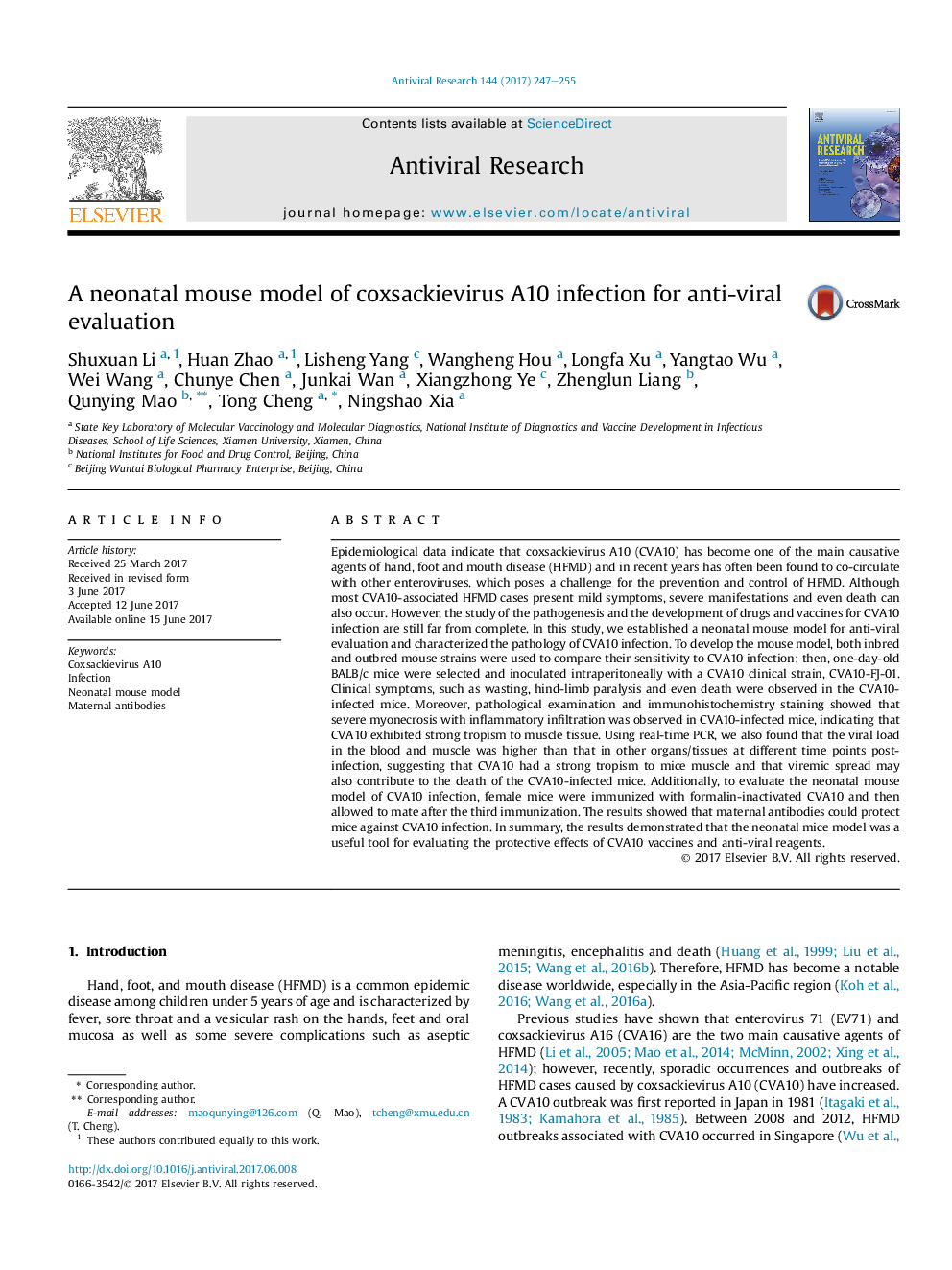| کد مقاله | کد نشریه | سال انتشار | مقاله انگلیسی | نسخه تمام متن |
|---|---|---|---|---|
| 5551718 | 1557799 | 2017 | 9 صفحه PDF | دانلود رایگان |

- A neonatal mouse model of coxsackievirus A10 (CVA10) infection was successfully developed.
- This was first study to characterize the pathology of CVA10 infection, finding that CVA10 had a strong tropism to muscles.
- The infection model was successfully applied to evaluate a formalin-inactivated CVA10 vaccine.
Epidemiological data indicate that coxsackievirus A10 (CVA10) has become one of the main causative agents of hand, foot and mouth disease (HFMD) and in recent years has often been found to co-circulate with other enteroviruses, which poses a challenge for the prevention and control of HFMD. Although most CVA10-associated HFMD cases present mild symptoms, severe manifestations and even death can also occur. However, the study of the pathogenesis and the development of drugs and vaccines for CVA10 infection are still far from complete. In this study, we established a neonatal mouse model for anti-viral evaluation and characterized the pathology of CVA10 infection. To develop the mouse model, both inbred and outbred mouse strains were used to compare their sensitivity to CVA10 infection; then, one-day-old BALB/c mice were selected and inoculated intraperitoneally with a CVA10 clinical strain, CVA10-FJ-01. Clinical symptoms, such as wasting, hind-limb paralysis and even death were observed in the CVA10-infected mice. Moreover, pathological examination and immunohistochemistry staining showed that severe myonecrosis with inflammatory infiltration was observed in CVA10-infected mice, indicating that CVA10 exhibited strong tropism to muscle tissue. Using real-time PCR, we also found that the viral load in the blood and muscle was higher than that in other organs/tissues at different time points post-infection, suggesting that CVA10 had a strong tropism to mice muscle and that viremic spread may also contribute to the death of the CVA10-infected mice. Additionally, to evaluate the neonatal mouse model of CVA10 infection, female mice were immunized with formalin-inactivated CVA10 and then allowed to mate after the third immunization. The results showed that maternal antibodies could protect mice against CVA10 infection. In summary, the results demonstrated that the neonatal mice model was a useful tool for evaluating the protective effects of CVA10 vaccines and anti-viral reagents.
Journal: Antiviral Research - Volume 144, August 2017, Pages 247-255